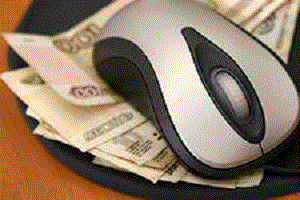What is a sales funnel, what is its feature and where does it apply
 Sales Funnel – sales funnel from English. This technology in marketing first appeared in the United States in 1898 (developed by lawyer Elias Lewis), and is successfully used in our time around the world.
Sales Funnel – sales funnel from English. This technology in marketing first appeared in the United States in 1898 (developed by lawyer Elias Lewis), and is successfully used in our time around the world.
In business, the sales funnel is a unique method of working with the audience, which allows you to follow the “journey” of potential customers from the moment they become familiar with the offer (first touch) to a successful transaction (purchase).
Understanding what a business sales funnel will allow entrepreneurs to repeatedly increase their earnings. This technology works perfectly in online trading, helps to successfully organize the sale of goods in an offline store. But this is not a “magic pill” that will save a businessman from problems with attracting and processing clients. Sales funnels will help you more effectively fight for the attention of a potentially interested audience, properly attract it to your offer and work with it in the future.
In the west, this technology has appeared due to the fact that the supply on the market is far ahead of demand. In principle, entrepreneurs in the CIS countries are also confronted with this problem, which makes them resort to training in the courses “How to make and run a sales funnel correctly”.
Where and how can a sales funnel be used?
30 years after the appearance of the concept “Sales Funnel”, it was successfully combined with another AIDA trading technology. In marketing there are 4 stages of readiness of potential customers (formula AIDA):
sales funnel
A – Attention (captures the user’s attention using advertising tools).
I – Interest (the user must be interested in the content of the advertisement).
D – Desire (a potential client who saw an advertisement should have a reason to use the offered service / product).
A – Action (after a desire arises, a person begins to proceed to action: calls the company, goes to the store, visits the site).
A customer who has gone through all the above steps is considered to be “warm” in marketing. It remains to take it and close the deal.
There is only one question: how to make a draft sales funnel, in which a potential client enters and is guaranteed to perform the action needed by the business?
This is exactly the art of marketing, and most importantly – the marketer who promotes your business. But much also depends on the following factors:
tools for promotion of goods / services (what kind of advertising and where the demonstration is started / visibility and accuracy of information);
the ability to find and “filter” the right audience;
marketing policy and “prices” (holding promotions, discounts).
The main task of marketing sales funnels is to explain to the consumer, for what reason, your product / service is the best on the market, and why they are worth buying from you.
The value of the sales funnel for your business
Building a sales funnel is an ideal way to analyze the quality of your business. It will allow you to see the productivity of all departments of the company, ranging from marketing, to the quality of processing and communication with the client.
Imagine that you have opened an online store and the main task is to bring the maximum number of customers, to correctly “work out” them. With the help of a business sales funnel, you will be able to figure out at which of the stages the number of customers becomes much smaller and why this happens. So you can take all the necessary measures to optimize the work of your employees.
Conversion work – eliminating gaps in your business
Sales Funnel is a tool that can be easily displayed in an Excel spreadsheet or using MindMap, add infographic elements to it and display “boring” reports from numbers. So you can see the conversion at each stage of the funnel, and take the necessary actions.
Conversion of the site / business sales funnel is an indicator of the effectiveness of each of the stages, and it is measured as a percentage. Conversion shows what is the ratio of possible and really perfect actions of customers.
Consider all the example:
Advertising on Facebook was launched, 2,000 people saw the banner (stage 1 of the Attention funnel).
Of the 2000 people, only 200 called the company (Stage 2 of the Interest Funnel).
From among the callers, 20 people came to the store (Stage 3 Desire funnel).
In the store 2 people made a purchase (Action 4th funnel stage)
From this we could see the following conversion:
Stage 1: 200 people (who called) / 2,000 (who saw the banner) * 100% = 10%
Stage 2: 20 people (who came to the store) / 200 people (who called) * 100% = 10%
Stage 3: 2 people (bought in the store) / 20 people (who came to the store) * 100% = 10%
At each of the above stages, the conversion is – 10%.
Now let’s calculate the conversion across the entire sales funnel described above:
2 (actually bought in the store) / 2 000 (who saw the banner on Facebook) * 100% = 0.1%
The task of all entrepreneurs is to set up the sales funnel correctly and bring each of its stages to the maximum ideal.




